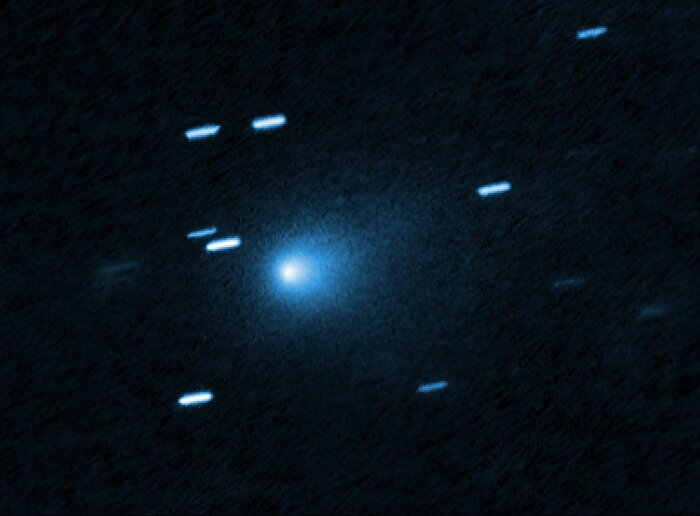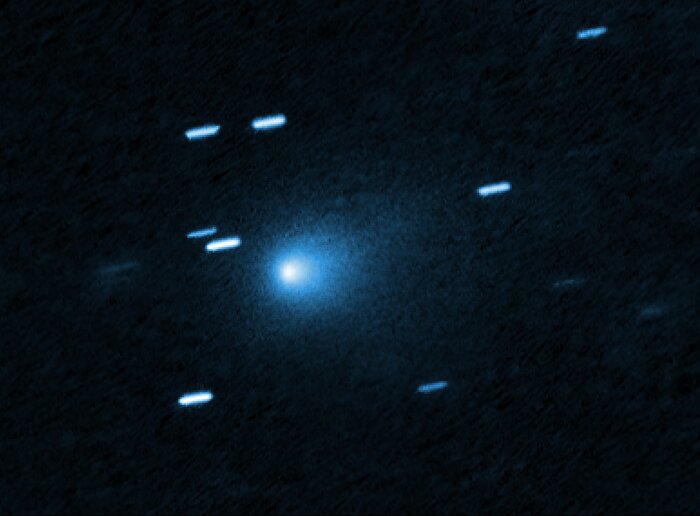The interstellar comet 3I/Atlas is currently racing toward the Sun as our star enters a more active phase. Solar scientists expect a coronal mass ejection (CME) — an immense burst of plasma and magnetic fields — to erupt soon. NASA’s latest modeling suggests such a CME could cross paths with 3I/Atlas around 25 September 2025 (give or take a day), making this the first recorded instance of a CME striking an interstellar comet.
This cosmic visitor is only the third interstellar object ever detected, after ‘Oumuamua and Comet Borisov. Observations from the Minor Planet Center (International Astronomical Union) indicate 3I/Atlas originated outside the Solar System, sports a dusty coma, and recently grew a visible tail after weeks without one. Current estimates place its nucleus at about 5.6 kilometers across and its mass at more than 33 billion tons — an unusually high figure for a comet. According to Harvard astrophysicist Avi Loeb, such a mass implies we should have already detected vast numbers of smaller interstellar objects, raising questions about how representative or rare 3I/Atlas might be.

A CME–comet interaction is not unprecedented. In 2007, NASA’s STEREO-A spacecraft recorded a CME ripping away Comet Encke’s tail, which re-formed within minutes. Scientists predict 3I/Atlas may experience a similar “tail-stripping” event. However, NASA does not expect the CME to significantly alter the comet’s trajectory, though direct observation may be difficult because 3I/Atlas will soon pass behind the Sun from Earth’s perspective.
Travelling at roughly 221,000 km/h, the comet will make a close approach to Mars on 3 October 2025. This offers an unexpected opportunity: cameras aboard the Trace Gas Orbiter (CaSSIS) and Mars Express (HRSC) are poised to capture high-resolution images of this rare interstellar wanderer during its flyby.
If confirmed, the CME encounter could deliver new insights into how solar plasma interacts with material originating beyond the Solar System. But because 3I/Atlas is so massive and faintly understood, some of the current claims — especially about its mass and rarity — may be revised as more data arrive.



